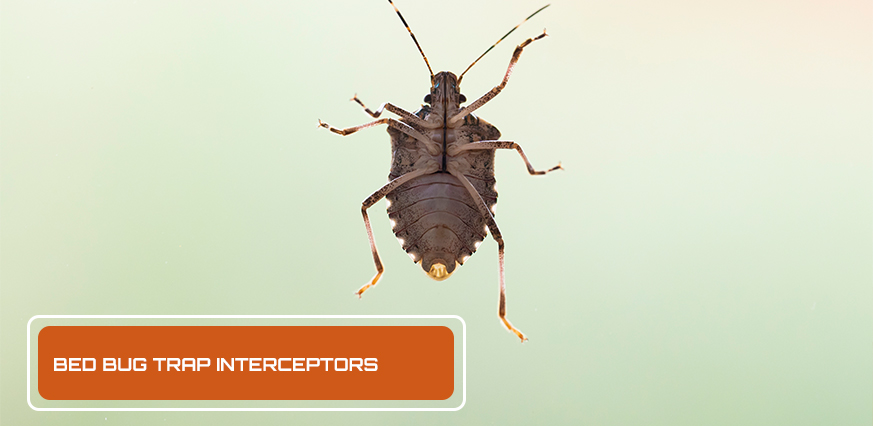
Unwanted visitors like bed bugs can cause discomfort and restless evenings in our homes. Bed Bug interceptor traps can help you defend your house and your family from unwelcome infestations. These traps offer a quick, dependable way to find bed bug infestations and prevent them.
This post will discuss the advantages of utilizing white bed bug trap interceptors, how to use them properly, and advice for a successful bed bug control plan.
Understanding Bed Bug Trap Interceptors
Bed bug trap interceptors are simple yet effective devices designed to capture and monitor bed bugs. They serve as a passive monitoring tool that helps homeowners detect and control bed bug infestations early on. These interceptors work by capitalizing on bed bugs’ natural behavior – they climb up the legs of furniture in search of a blood meal. When the bugs attempt to crawl up the legs of the furniture, they get trapped inside the interceptor.
Typically, interceptor cups are made of a plastic dish big enough to hold a bedpost and a bed bug-catching “moat” around the outside.
How do Bed Bugs Trap Interceptors work?
Here’s how bed bug trap interceptors typically work:
- Placement: Interceptors are placed under the legs of furniture such as beds, sofas, or chairs. Bed bugs often climb up furniture legs to reach sleeping humans. The interceptors create a barrier that bed bugs must climb over to reach the bed or other furniture.
- Design: The interceptors are designed with specific features to make it challenging for bed bugs to escape once they have climbed in. They usually have a central well or reservoir that bed bugs fall into after climbing up the outer walls.
- Color: Some interceptors are designed in white or other contrasting colors. The color contrast helps in making bed bugs more visible, making it easier for you to detect an infestation.
- Passive Monitoring: Bed bug trap interceptors are passive devices, meaning they don’t actively attract bed bugs but rely on the bugs’ natural movement. If bed bugs are present in the room and attempt to climb up the furniture, they are more likely to get trapped in the interceptor.
- Detection: By regularly inspecting the interceptors, you can check for trapped bed bugs. If you find bed bugs inside the interceptor, it’s a clear indication that there may be an infestation that requires further action.
- Early Intervention: The early detection provided by interceptors allows homeowners or pest management professionals to take timely measures to control the infestation, which can prevent it from spreading and becoming more challenging to manage.
DIY of using bed bugs trap interceptors
You may easily check for bed bug activity and catch them before they get to your furniture by using bed bug trap interceptors as a DIY (do-it-yourself) solution. An instruction manual for installing bed bug trap interceptors is provided below:
Materials Needed:
- Bed bug trap interceptors (You can purchase these online or at a local hardware or pest control store.)
- Furniture with legs (bed, sofa, chairs, etc.)
- A flashlight (optional, but helpful for inspection)
Step 1: Choose the Right Interceptors
Select bed bug trap interceptors that are suitable for the size of the furniture you want to protect. Make sure you have enough interceptors to place under each furniture leg. Some interceptors are designed for specific furniture types, so read the product instructions to ensure compatibility.
Step 2: Prepare the Furniture
- Carefully clean the area around the furniture legs to remove any dust, debris, or potential hiding spots for bed bugs. This step is essential to ensure the interceptors work effectively.
- If your furniture has wheels or casters, remove them or find a way to prevent bed bugs from bypassing the interceptors.
Step 3: Install the Interceptors
- Place the interceptors under the legs of the furniture. Ensure that each furniture leg fits securely inside the central well or reservoir of the interceptor. This prevents bed bugs from climbing up the leg and escaping the interceptor.
- Repeat this process for each furniture leg, ensuring uniform placement.
Step 4: Monitor and Inspect
- Regularly inspect the interceptors for any trapped bed bugs. Check the interceptors at least once a week or more frequently if you suspect bed bug activity.
- If you notice any bed bugs inside the interceptor, take immediate action to address the infestation. Consult professional pest control if needed.
Step 5: Continue Preventive Measures
While bed bug trap interceptors are an effective tool, it’s essential to continue other preventive measures to minimize the risk of infestations. These measures may include:
- Thoroughly clean and vacuuming your living space.
- Sealing cracks and crevices in walls and furniture.
- Using mattress encasements to protect your bed.
- Reducing clutter to eliminate potential hiding spots.
By following this DIY guide, you can set up bed bug trap interceptors to help detect and prevent bed bug infestations, providing you with peace of mind and early intervention capabilities. Remember that regular inspection and combining interceptors with other preventive measures are key to effectively managing bed bug risks.
Common types of bed bugs trap
There are numerous popular varieties of bed bug traps on the market, and each one is intended to catch or uniquely keep track of bed bugs. These traps may be utilized in homes as well as other settings like hotels, dorms, or even when traveling. They are helpful instruments for early detection. Listed below are a few popular kinds of bed insect traps:
- Climb-Up Interceptors: Placed under furniture legs, bed bugs attempting to climb up get trapped in the outer reservoir, made of materials like plastic, cardboard, or metal.
- Pitfall Traps: Smooth-sided containers around furniture legs for monitoring bed bug activity. Bed bugs fall in but can’t climb out due to slippery sides.
- Chemical Lures and Sticky Traps: Use chemical lures to attract and capture bed bugs on sticky surfaces. Often used in research or by professionals for monitoring.
- Encasements with Traps: Some mattress encasements have built-in traps. Protects bedding from bed bugs and captures any existing bed bugs within.
- DIY Homemade Traps: Homemade traps using everyday items like tape or barriers. Less effective than commercial traps but offer essential monitoring.
When should you consider using bed bug traps?
To successfully monitor for bed insect activity, identify infestations early, and help with the overall management of bed bugs, you should take into consideration employing bed bug traps in several situations. Following are a few circumstances where setting up bed insect traps is advised:
- Post-Travel: After traveling, use traps to monitor for bed bugs that might have come home with you from hotels or other accommodations.
- Suspected Infestation: If you suspect bed bugs, traps confirm their presence. Regularly check traps for signs like trapped bugs or fecal spots.
- During Treatment: When undergoing professional bed bug treatment, traps help monitor treatment progress by capturing bed bugs.
- Comprehensive Approach: Combine traps with cleaning, sealing cracks, using encasements, and professional help for a more vigorous bed bug defense.
- Rental or Shared Spaces: In rentals or shared spaces, traps monitor and prevent bed bug issues due to higher occupancy turnover.
Traps primarily monitor and detect bed bugs. If you find evidence, take action promptly, such as further inspection or seeking professional assistance. Consistent use and regular checks keep you ahead of potential bed bug problems.
Are Bed Bug Interceptors Effective?
When employed as a part of a complete bed insect control strategy, bed bug interceptors can be successful. They come with several benefits but also some drawbacks. Let’s look at the Pros and Cons of employing bed bug interceptors:
Pros of Bed Bug Interceptors:
- Early Detection
- Non-Toxic
- Cost-Effective
- Easy to Use
- Visual Confirmation
- Integrated Approach
Cons of Bed Bug Interceptors:
- Passive
- Not a Complete Solution
- Furniture Limitations
- Doesn’t Eliminate Bed Bugs
Although bed bug interceptors have significant restrictions dependent on bed insect activity and the type of furniture they are used on, they are useful for early discovery and non-toxic control. Used most effectively as part of a whole bed bug management strategy.


